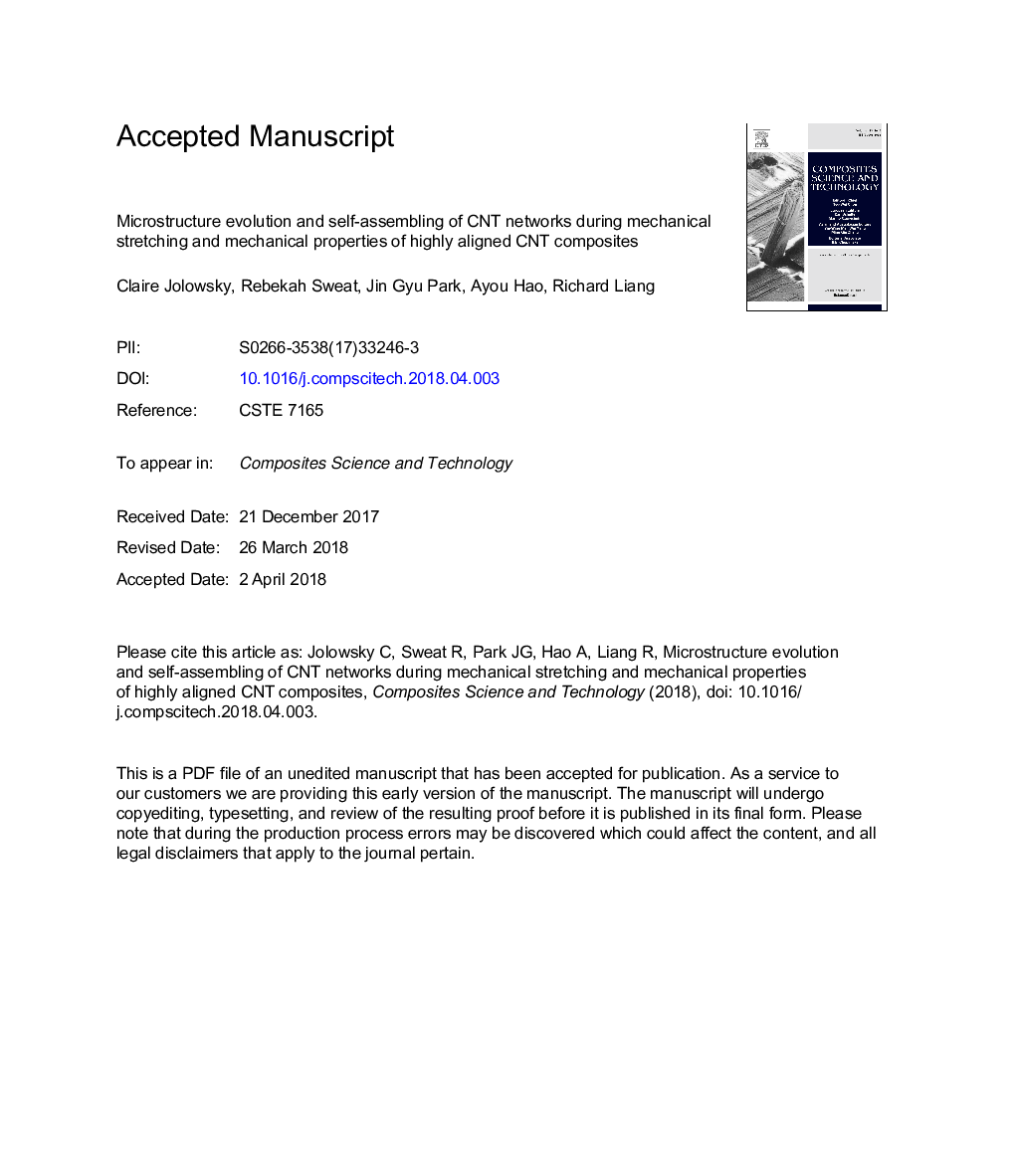| کد مقاله | کد نشریه | سال انتشار | مقاله انگلیسی | نسخه تمام متن |
|---|---|---|---|---|
| 10226559 | 1701277 | 2018 | 25 صفحه PDF | دانلود رایگان |
عنوان انگلیسی مقاله ISI
Microstructure evolution and self-assembling of CNT networks during mechanical stretching and mechanical properties of highly aligned CNT composites
دانلود مقاله + سفارش ترجمه
دانلود مقاله ISI انگلیسی
رایگان برای ایرانیان
کلمات کلیدی
موضوعات مرتبط
مهندسی و علوم پایه
سایر رشته های مهندسی
مهندسی (عمومی)
پیش نمایش صفحه اول مقاله

چکیده انگلیسی
Using a floating catalyst synthesis process, carbon nanotubes (CNTs) can be produced to form randomly oriented networks. However, to realize their potential high structural performance, the nanotubes must be aligned and closely packed to eliminate molecular and microscale defects, which would be similar to carbon fiber microstructures. This paper describes a mechanical stretching technique using bismaleimide (BMI) resin to transform the randomly oriented networks into aligned networks. The BMI resin acts as a lubricant to decrease the friction between the nanotube bundles within the network during the stretching process. The unique flattening and self-assembling behaviors and the resultant graphitic crystal packing of CNTs were observed. The nanotubes' degree of alignment, measured by Raman and X-ray scattering drastically increased at approximately 40% stretch strain, plateaued at a 60% stretch strain, and achieved a maximum of 0.92 degree of alignment with noticeable graphitic crystal packing at 80% stretch strain. Both TEM and SEM observations indicate that as the stretch strain increased, the CNTs started to align along the stretched direction and self-assembled into large bundles. Additionally, high-resolution TEM analysis indicated that the CNTs exhibited flattening and polygonization self-assembling to form graphitic crystal packing. Tensile testing on the stretched CNT/BMI composite samples revealed an increase in Young's modulus, with a maximum of 252â¯GPaâ¯at 80% stretch strain, while an ultimate tensile strength of 1.58â¯GPa was reached at 70% stretch strain. The high degree of alignment and polygonization packing resulted in a better load transfer among CNTs, and thus a higher mechanical performance in the resultant CNT composites. Furthermore, this stretching process is scalable and has the potential to realize greater performance for applications using CNTs.
ناشر
Database: Elsevier - ScienceDirect (ساینس دایرکت)
Journal: Composites Science and Technology - Volume 166, 29 September 2018, Pages 125-130
Journal: Composites Science and Technology - Volume 166, 29 September 2018, Pages 125-130
نویسندگان
Claire Jolowsky, Rebekah Sweat, Jin Gyu Park, Ayou Hao, Richard Liang,